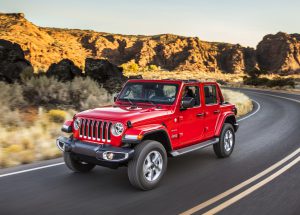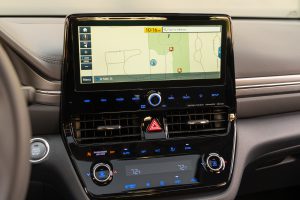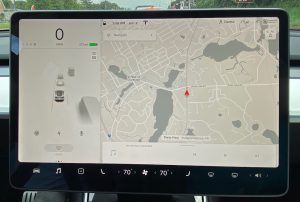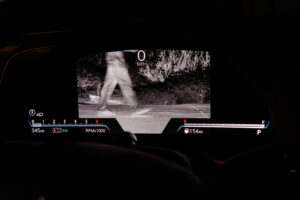Americans can take some things for granted, particularly how much our armed forces contribute to our health and well-being on a daily basis. Typically, it’s military’s technology needs that lead to breakthroughs in consumer products, like M&Ms and Cheetos.
Correspondingly, if you love driving your sport-utility vehicle with satellite navigation on a touchscreen while wearing aviators, thank the military. A surprising amount of what we take for granted in our cars, trucks and SUVs originated somewhere in the world as a military RFP.
So let’s march back in time, shall we?
Sport-utility vehicles
Regardless of which SUV you drive, they all owe their existence to the U.S. military. In July 1940, they put out an RFP for a “light reconnaissance vehicle” that would weigh less than 1,300 pounds, have a wheelbase of less than 75 inches, measure less than 36 inches tall, employ four-wheel drive with a two-speed transfer case and could carry 600 pounds. Its body must be rectangular, have a fold-down windshield, three bucket seats, and blackout and driving lights. Ok, the weight target was later revised, but otherwise, the proposal became the Willys-Overland MA, known today as the Jeep, a vehicle whose character now overshadows the entire automotive industry.
(Ford hypes Mach-E, taking it on “Electric-Vacation.”)
CPUs
The central processing unit, or CPU, is the part of the computer that actuates software, and a typical new car contains between 25 and 50 of them on average, with luxury cars containing more than 100 in some cases. But the first digital, programmable computer was developed during World War II at the University of Pennsylvania as an electronic calculator to help the war effort. But it could hardly be considered a desktop PC. Weighing 30 tons, it occupied 40 cabinets with 18,000 vacuum tubes, 10,000 capacitors, 6,000 switches and 1,500 relays. And here you thought your laptop was heavy.
Satellite navigation system
That guidance your vehicle receives comes from global positioning satellites orbiting the earth, first developed bythe United States Navy, which built the first satellite-based navigation system in 1959 to track its Polaris nuclear submarines. Each satellite uses multiple atomic clocks, developed by a Columbia University professor in the 1940s, to calculate the time within 100 billionths of a second. Dubbed Transit, the system measured the Doppler shift in the satellite’s radio transmission as it orbited. This required prior knowledge of its orbit. Modern satellites do the reverse, transmitting their position form earth, for faster response.
(Auto workers move up in line for COVID vaccine.)
Capacitive touchscreens
If you love the convenience of a touchscreen, thank the Brits. It was born in 1965 at the United Kingdom at the Royal Radar Establishment, the advanced research arm of Britain’s Air Ministry. The screen is actually multiple layers of glass and plastic coated with a conductive material. Touching the screen completes an electric circuit, commanding the operating system to respond. Initially used by air traffic controllers, it wouldn’t reach consumers until the arrival of the Hewlett-Packard HP-150 in 1982, a PC running MS-DOS on a 9-inch Sony touch-sensitive CRT. The first touchscreen in a car was unveiled three years later in the 1986 Buick Riviera.
Radar
New vehicle driver assistance safety features like automated cruise control use radar to add an extra edge of safety. Radar was developed as far back as 1888 by German physicist Heinrich Hertz, who discovered that radio waves could be transmitted and speed measured. But it was Christian Hülsmeyer, a German engineer, who took Hertz’s principles and attempted to sell radar to the German military in the early 1900s. They weren’t interested, but the U.S. Naval Research Laboratory in Washington, D.C. was. They began working with it in 1922. By World War II, radar was commonly used by the U.S. military to track ships and planes.
Night vision
Ponder the battlefield advantage of having devices that use infrared light to see where there is no light. Initially developed by the Germans in World War II, they were too unwieldy, despite magnifying light 1,000 times. After World War II, the U.S. Army worked with RCA for the next couple decades to develop night vision devices, which were used during the Vietnam War. But it wouldn’t be perfected until the 1990s, where they played a crucial role in Operation Desert Storm. First offered as an automotive option by Cadillac, it’s now a common option on high-end automobiles for navigating dark country roads and avoiding deer, not the Viet Cong.
(Volvo confirms small EV in the works.)
Aviator glasses
OK, it’s not a part of your car, but you might wear them while driving one. Now a fashionably classic design icon, aviator sunglasses were developed after test pilot Shorty Schroeder flew a biplane above 33,000 feet. Schroeder’s insulated goggles fogged, so he lifted them, only to have his eyes freeze over. Miraculously, Schroeder managed to land the plane. The incident shocked his friend, Lt. John Macready, who then worked with Bausch & Lomb to develop the glasses, which debuted in 1936 as Ray-Ban Aviators. The glasses were far lighter than goggles and featured green lenses that maximized vision by reducing glare.
For GREAT deals on a new or used Nissan check out Mossy Nissan Kearny Mesa TODAY!




